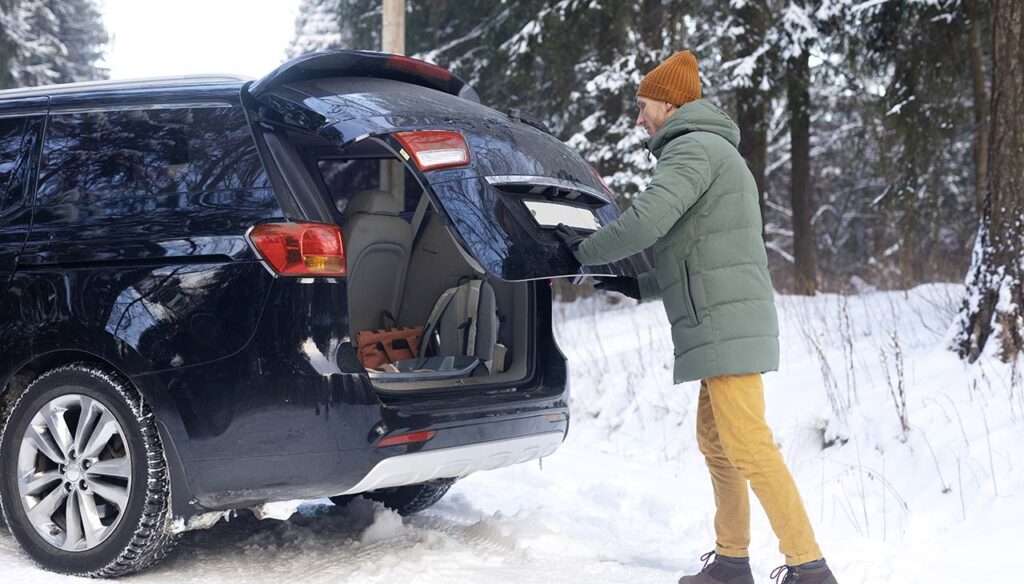While winter in a desert climate might not bring the snow and ice typically associated with the season, your vehicle still requires special attention during the cooler months. Even in desert regions, temperatures can drop significantly, leading to potential challenges for your car. From ensuring that your battery is in top condition to checking your tire pressure, there are several steps you can take to prepare your vehicle for winter in a desert environment. This guide will provide you with essential tips to maintain your car’s performance and ensure your safety on the road throughout the winter season.
Preparing Your Car
Battery and Tire Maintenance
Check the Battery: It’s crucial to ensure that your car’s battery is prepared for the colder temperatures, even in a desert climate where winter temperatures can be more mild. A battery that works well in warm weather might not perform as effectively in cooler conditions. Have your battery tested to ensure it has sufficient charge and is in good condition to avoid being stranded with a car that won’t start.
Inspect the Tires: Proper tire inflation and tread depth are essential for safe driving during winter months. Cooler temperatures can cause tires to lose pressure, so check your tire pressure regularly. Also, evaluate the tread depth of your tires to ensure they can adequately grip the road, especially in early morning or late-night colder temperatures which can sometimes bring unexpected frost or slick spots on the road in desert areas.
Consider Winter-Grade Oil
Switching to winter-grade oil is another step you can take to ensure your car performs optimally during winter in a desert climate. Winter-grade oil is thinner and designed to flow more easily at lower temperatures, making it easier for your engine to turn over and start in cooler weather. Consult your vehicle’s manual to determine the right oil for your car and consider an oil change to winter-grade oil before the temperatures drop.
Exterior Care
Wash and Wax Your Car
Regularly washing your car during the winter months is crucial, especially in a desert climate where salt and road debris can accumulate on the vehicle’s undercarriage and body. Salt, used in some areas to manage icy conditions, can lead to rust and corrosion over time. Washing your car can help remove these harmful substances. Additionally, applying a layer of wax can protect the paint from the elements, preserving the car’s exterior and maintaining its aesthetic appeal.
Windshield Wiper Maintenance
It’s also important to check your windshield wipers and replace them if they are worn or damaged. Effective wipers are vital for maintaining visibility during winter, as they can encounter morning dew or the occasional rain, even in desert climates. Ensuring your wipers are in good condition can prevent streaks and smears on your windshield, which can impede your view while driving.
Interior Care
Install Rubber Floor Mats
Rubber floor mats are an essential addition to your vehicle during the winter months, even in a desert climate. They provide a protective barrier against mud and moisture, which can be trekked into the car. Easy to clean and durable, rubber mats safeguard the interior of your car by preventing the carpet from becoming wet and stained, thereby maintaining the cleanliness and longevity of your vehicle’s interior.
Winter Emergency Kit
It’s paramount to keep a winter emergency kit in your car, prepared with essentials, especially during cooler months. This kit should include items such as blankets to keep you warm if you’re stranded, water for hydration, non-perishable snacks, a flashlight with extra batteries, and a first-aid kit. Having these items on hand can significantly enhance your safety and comfort in the event of an emergency.
Check the Heating System
Before the winter season fully sets in, ensure your car’s heating system is working efficiently. A functional heating system is crucial not just for driver and passenger comfort, but also for safety reasons. It helps to defrost and demist the windshield and windows, maintaining clear visibility. If there are any signs of malfunction, such as unusual noises or insufficient heating, have it inspected and repaired by a professional to guarantee you stay warm and safe while driving in colder temperatures.
Driving Tips
Increase Following Distance
It’s vital to increase your following distance when driving on potentially slippery roads to give yourself ample time to react to the vehicles in front of you. This precaution is particularly important in a desert climate during winter, where unexpected frost or icy patches can occur. Increasing the distance between you and the car ahead ensures that you have sufficient time to stop safely without sudden braking, which can lead to skidding or losing control of your vehicle.
Avoid Sudden Movements
To maintain control of your vehicle on slippery or uneven road surfaces, avoid sudden accelerations or braking. Gentle maneuvers are key to preventing your car from skidding. Instead of applying abrupt force to the pedals, gradually increase or decrease your speed. This technique helps maintain traction between your tires and the road, providing a safer driving experience.
Be Cautious of Black Ice
Black ice is a thin layer of transparent ice that is nearly invisible on the pavement, making it one of the most treacherous road conditions for drivers. It’s most commonly found during the early morning or in shaded areas where the sun’s warmth does not reach. Stay vigilant for signs of black ice, especially after a cold night or in places where moisture is present on the road. Adjusting your speed and driving cautiously can help avoid accidents caused by slipping on black ice.





